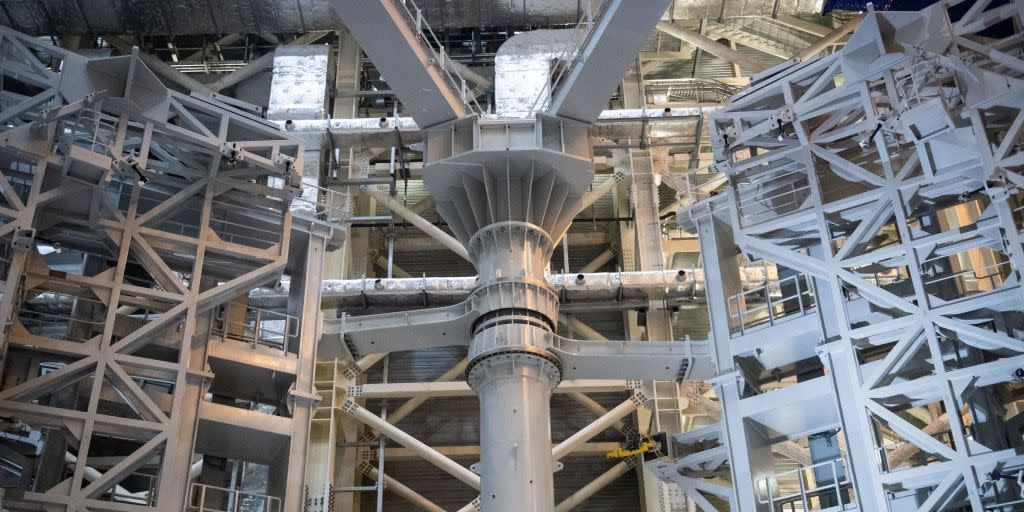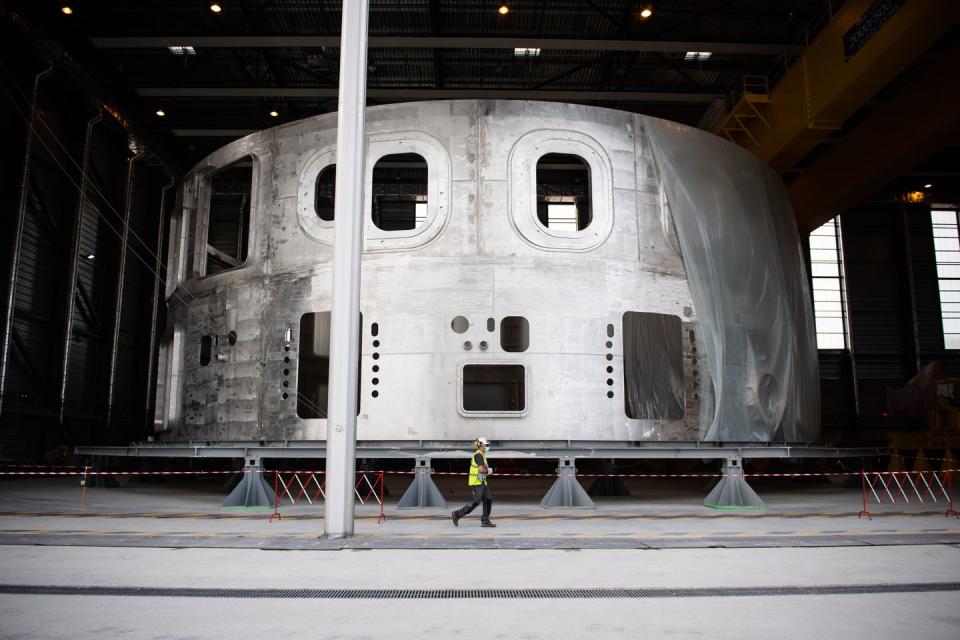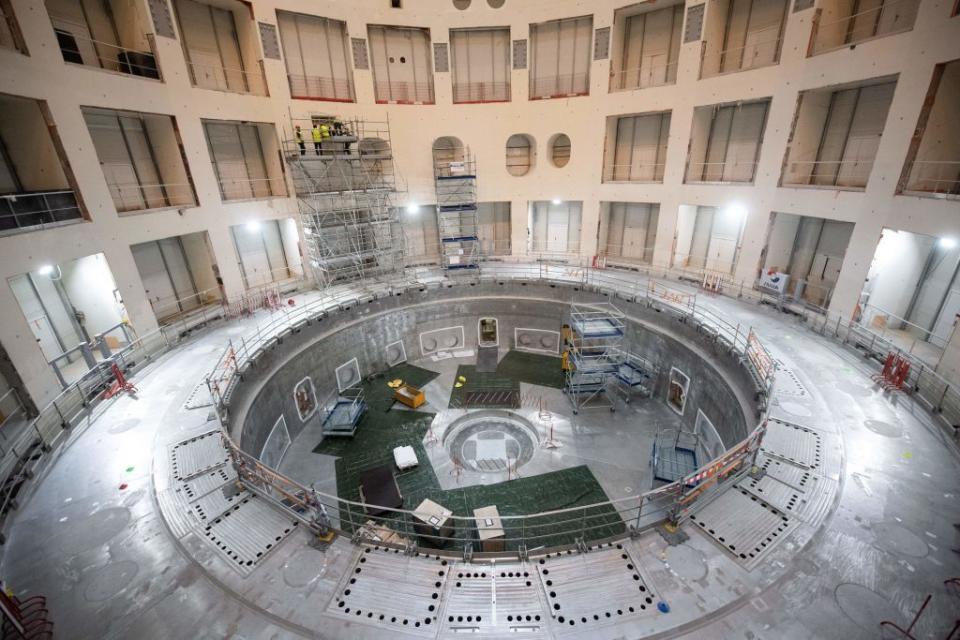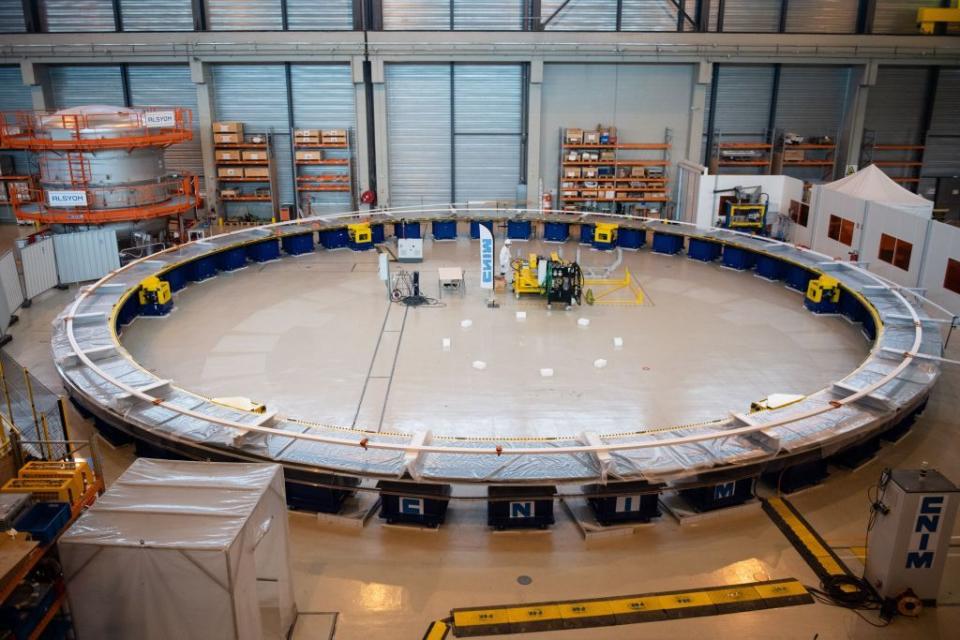The World's Largest Fusion Reactor Finally Begins Assembly

The International Thermonuclear Experimental Reactor (ITER) and its member nations have broken ground on assembling the million-component fusion reactor.
This comes shortly after they successfully installed and assembled the reactor base.
Assembly is scheduled to take five years, with a brief plasma demonstration in 2025.
The truly massive International Thermonuclear Experimental Reactor (ITER) has entered its years-long assembly phase. The fusion reactor has millions of individual parts that will eventually form the world's largest tokamak, a plasma reactor where extremely hot, charged plasma creates the conditions necessary for atoms to fuse and release considerable amounts of energy.
While ITER is one of a handful of very costly “miniature suns” in development around the world, it’s arguably the bellwether for self-sustaining fusion, given the seven countries that share its high cost and are invested in its success.
🔥 You love fusion. We love fusion. Let's nerd out over it together. 🔥
Before this week’s landmark, ITER partners and contractors around the world have already spent years ramping up to assembly, from beginning to make the millions of parts to assembling and installing the reactor’s base earlier this year. Many components must be manufactured and partially assembled in their home countries before being carefully transported and finalized at the ITER facility.
The “assembly phase” landmark is, therefore, more like a “groundbreaking” ceremony—ITER has had huge plans in the works for decades, and it’s finally about to start coming together in physical form. Everything for ITER has been custom-built, including the building where it will sit in Provence, France and the road that leads there from the nearest body of water.
After 35 years of brainstorming, planning, and preproduction, ITER says assembly will take five years, starting now.
📩 Make your inbox more awesome.

It’s a big step on the path toward 2025, when ITER says all the core parts of the reactor will be installed, fully integrated, and ready to produce its first plasma. That November—to mark the 40th anniversary of Ronald Reagan and Mikhail Gorbachev’s historic U.S.-Soviet Geneva summit—the reactor will begin a monthlong process of heating up to 150 million degrees Celsius, with a trio of heating elements pulling a combined 50MW of power, enough for about 10,000 homes. That will bring the plasma to a temperature 10 times greater than the sun’s in the doughnut-shaped reactor to generate as much as 500MW of energy for brief bursts.

This will take place inside a cryostat, which is the chamber that will hold the entire reactor. It’s fitted onto the base that’s there now, and its job is to bring the components inside down to an extremely cold temperature and keep them there.
The plasma donut swirling inside the reactor is contained in a “touchless” way by a magnetic field, but everything around it must be temperature shielded and cooled to ensure smooth and safe operation. That includes the structural magnets, which are held at cryogenically cold temperatures—just a few degrees above absolute zero.
Like a traditional nuclear fission plant, the reactor is cooled by water, but it’s also full of constantly replenished thermal shields and redundant cooling materials to continue to transfer heat out at all times.
That all might sound extraordinary, but the real science miracle of ITER is the plasma chamber.

Inside the reactor, plasma is kept flowing by superconducting electromagnets made of encircling coils of wire. A solenoid—basically a giant cavatappi pasta coiled into a donut—is centered inside a vacuum chamber, and small correctors and add-ons made from superconductors help to ensure the plasma flows within the donut shape without bursting out. (With tokamaks, the high energy cost to bring them up to temperature and plasma operation means that a “disruption,” or any event where the plasma leaks and potentially damages the shielding, is a big setback.)
The member nations making parts for the 23,000-ton tokamak are planning and designing these parts as they go, including accommodating the even greater complexity of making such a big version of a high-risk reaction. They plan to switch ITER’s reactor on for the first time in December 2025, when the first plasma reaction will last just a few milliseconds to indicate that the fully integrated plant is ready for operation.
After that, ITER will have several more years to fine tune and approach full plasma generation by its goal of 2030.
You Might Also Like

